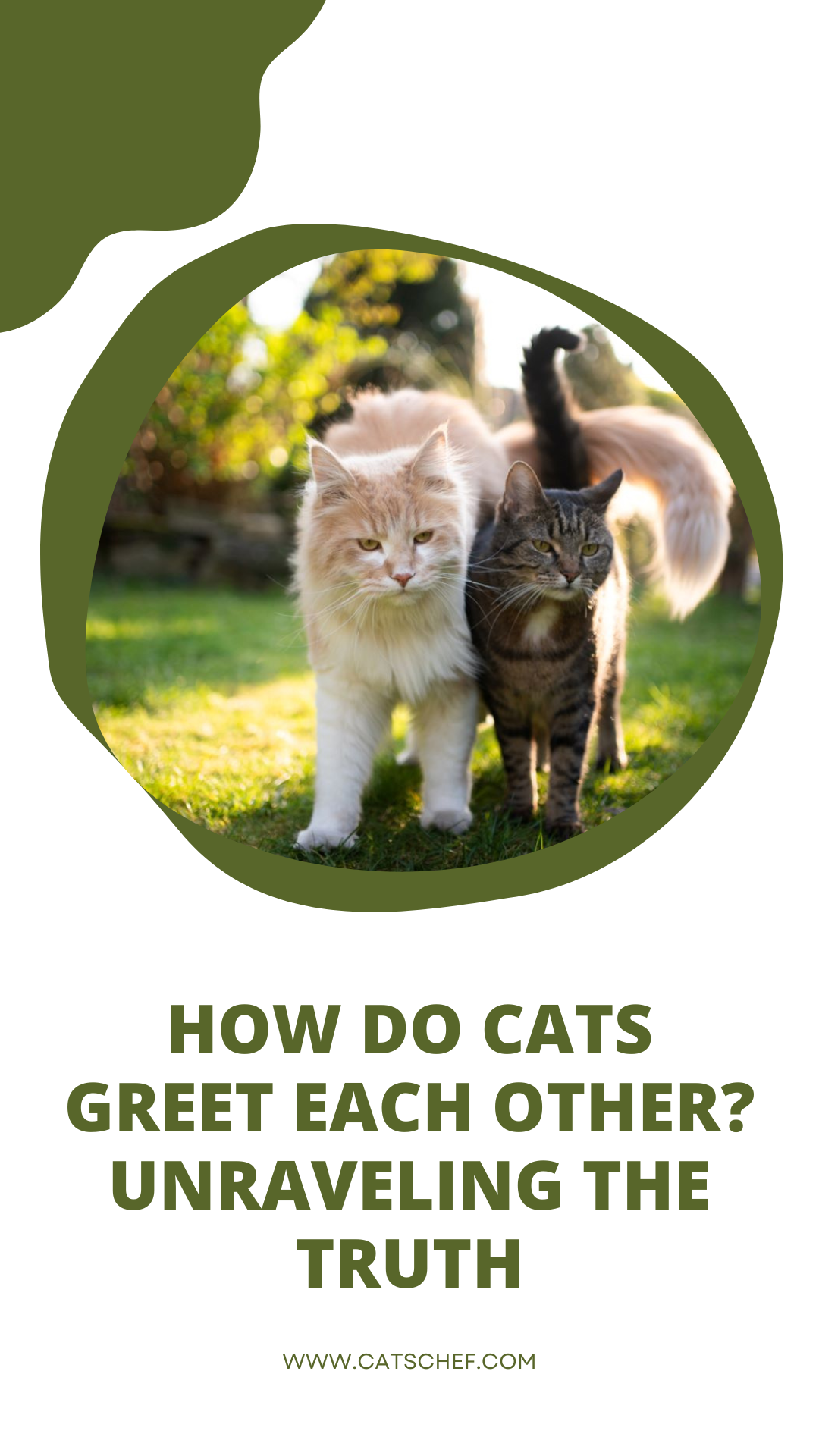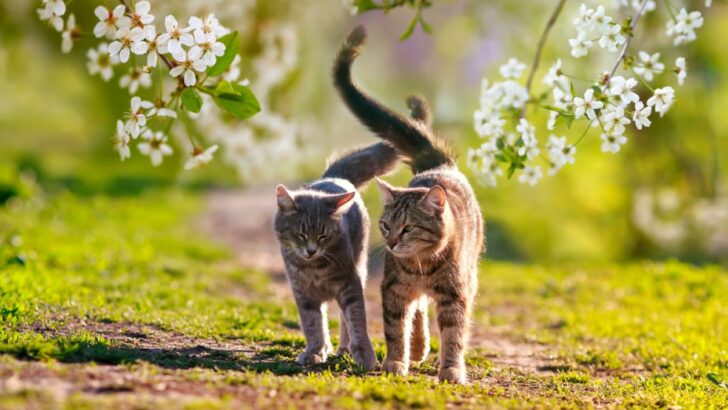We’re guilty of wondering whether cats communicate with each other the same way humans communicate with other humans, right?
Do cats meow at each other and know what each meow means? Do cats even need to communicate with each other through meows or other means?
Wonder no more. Now, even though we’ve been assured that cats don’t meow at other cats, that’s not necessarily the case and that’s not to say that cats don’t communicate with each other whatsoever. Needless to say, cats have a lot to share with the rest of the world – including other cats.
How many times have you had your furend meowing at you at 3 a.m. because she wants you to feed her? How many times have you caught her growling at your neighbor’s cat because she wasn’t happy to see him roaming around your backyard?
You’ve also probably caught glimpses of her twisting tails with your friend’s cat, right?
Cats communicate with each other, but not in the same way humans do – and that’s to be expected. Cats and humans aren’t meant to do everything the same way, and you aren’t supposed to understand everything your kitty does.
Nonetheless, here’s everything you need to know about how cats greet each other.
Do cats communicate with each other?
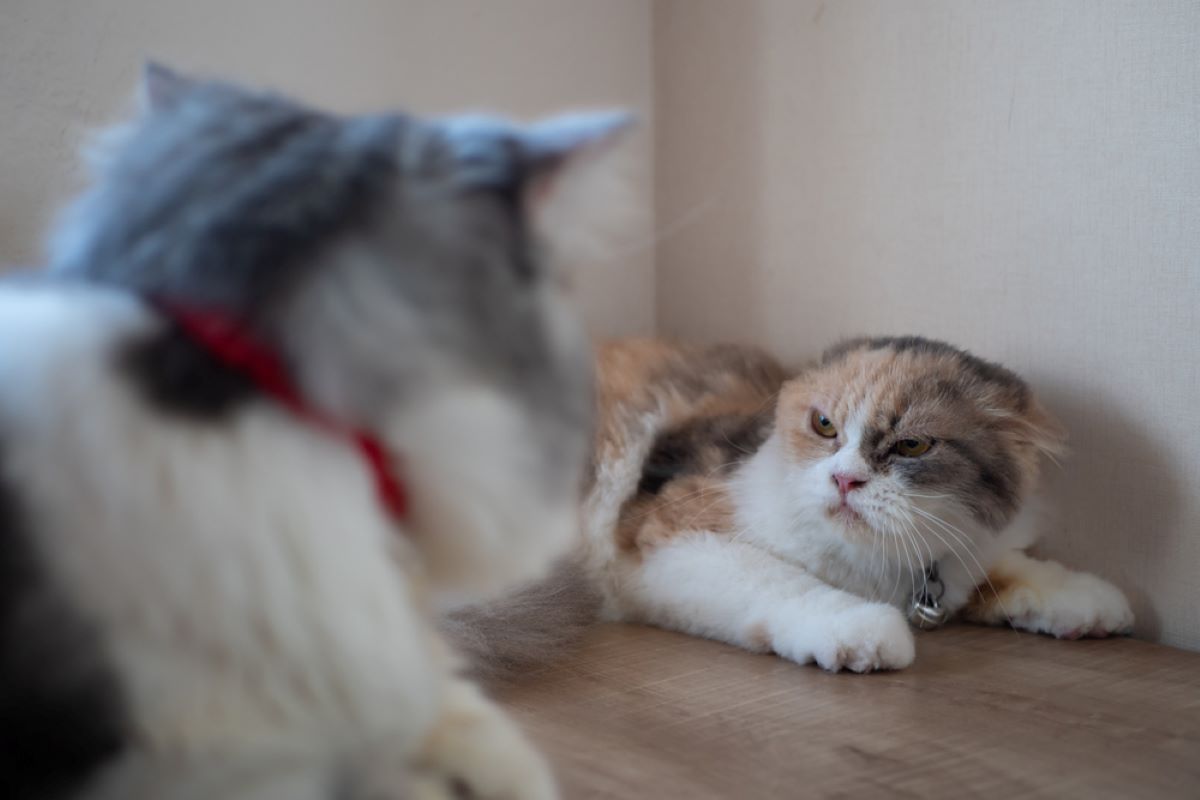
Cats do communicate with each other – that’s the short answer you were searching for. Cats meow at each other, sniff each other’s butts, and twist each other’s tails. They stare at each other, chase after each other, and paw at each other.
Contrary to popular belief, cats have a bunch of different methods of communication that humans mostly don’t even notice. We’re pretty sure that the whole “cats don’t meow at other cats, they only meow at humans” theory came to be because they changed the way they communicate over time.
Cats taught themselves to meow at humans more softly, melodiously, and lovingly – to get what they want, of course. Cats meow at other cats, too, but not in the same way as they do at humans.
For the most part, cats communicate with each other through body communication, physical touch, vocal communication, visual communication, and chemical cues. They greet each other by employing one, two, or more of these methods, and we’re bringing you a rundown of each of them.
How do cats greet each other?
1. Body communication
Oh, take a moment to observe the way your cat behaves around other cats, and you’re guaranteed to be mindblown. On one hand, cats resort to meowing when they’re trying to get someone’s attention or communicate how they’re feeling – but, not every feline resorts to meowing.
On the other, every cat resorts to some sort of body language to show affection, fear, anger, or most other emotions. Of course, different movements mean different things.
When cats greet each other with affection, for example, they’re likely to touch noses, twist tails, or rub against each other. When they greet with anger, annoyance, or even aggression, they’re likely to hunch their backs, lower their tails, and avert their eyes.
Generally speaking, a cat’s ears, eyes, and tails are the “chattiest” body parts and are most likely to “speak” when greeting another cat.
2. Physical touch
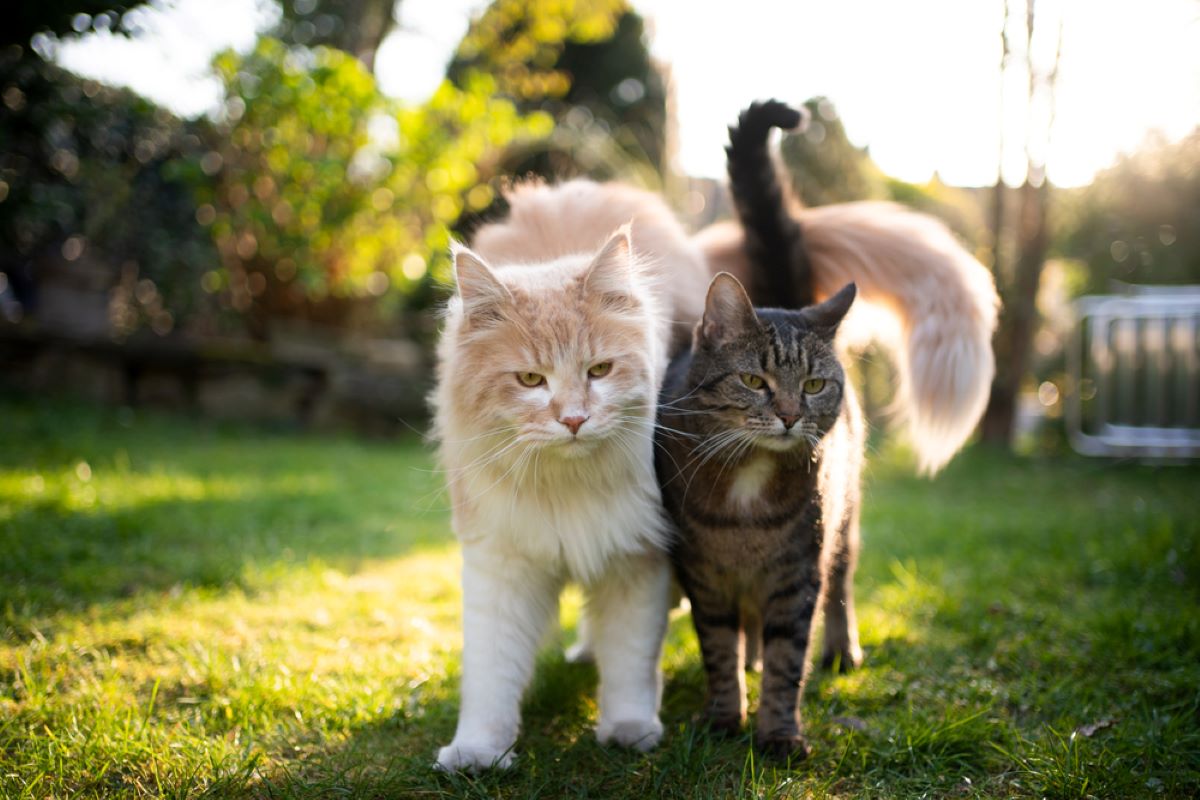
We’re getting to the nitty-gritty of feline communication with physical touch. When greeting each other, as we mentioned beforehand, cats are likely to employ their ears, eyes, and tails to communicate how they’re feeling.
But, they often touch noses or rub against each other, too. Before two cats greet each other, they go through a prompt process of determining whether they’re fond of each other or know each other.
When the little light bulb lights up, “Oh, that’s Frank, I love Frank!” the two cats will probably touch each other to show affection. Physical touch almost always showcases a positive response.
When the light bulb doesn’t light up or when the two cats recognize each other as enemies, they’re likely to shy away from making any contact and communicate through non-physical body language, vocal communication, visual communication, or even chemical cues.
3. Vocal communication
Cats communicate through sounds, too, and they don’t shy away from arranging full-blown discussions and conversations at 3 a.m. when everyone’s fast asleep. Rest assured there are numerous sounds that cats produce when communicating with other cats – meowing is only one of them.
Felines also resort to chirping, chirruping, chattering, trilling, purring, growling, hissing, yowling, caterwauling, and screaming. Of course, each sound corresponds with a different meaning and cats choose them depending on the message they’re trying to communicate.
Purring when greeting another cat, for example, would mean that the two know each other and spend enough time together to be safe and secure around each other. Growling when greeting, however, would mean that the two hate each other’s guts.
4. Visual communication
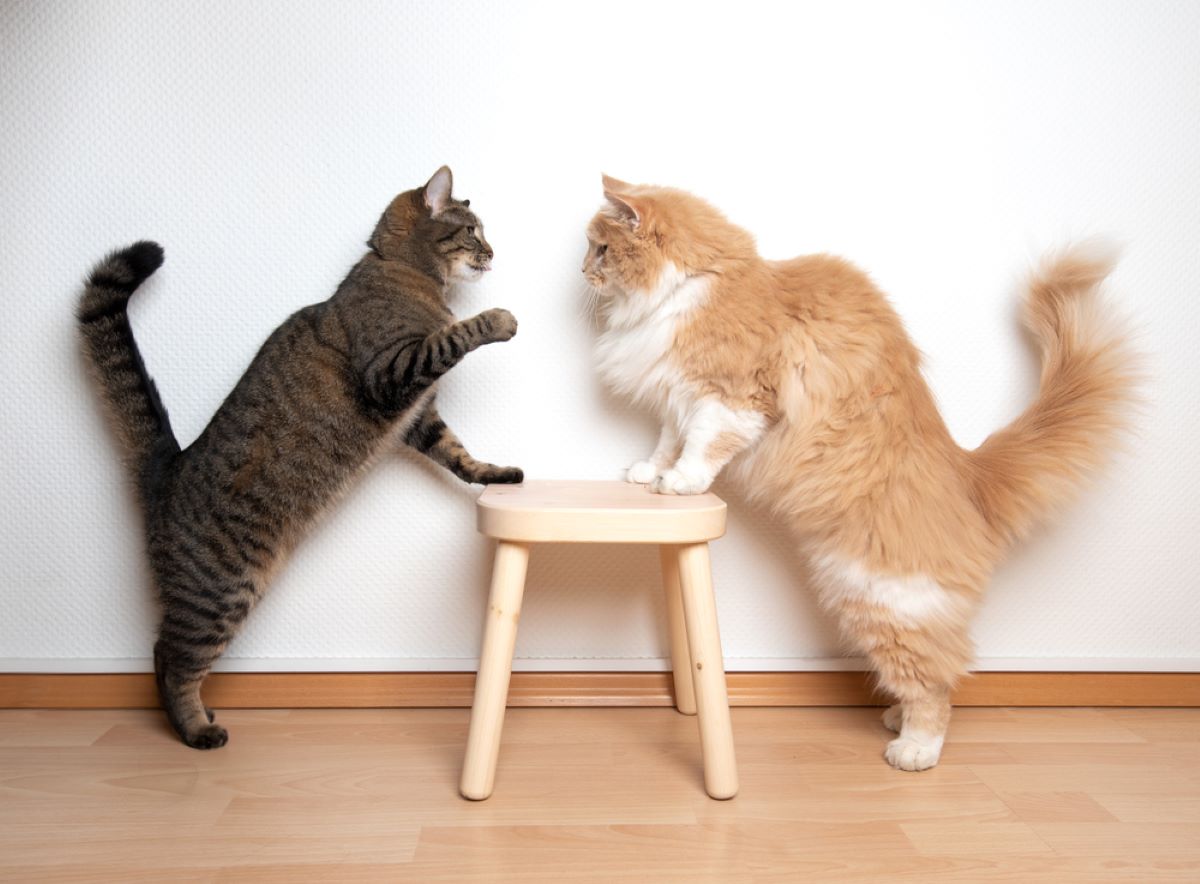
Come on, how many times have you witnessed two cats standing completely still, staring at each other’s souls, and not making a single sound? Well, that’s also a method of communication among cats and one of the ways they greet each other.
“The eyes, chico, they never lie” – we couldn’t agree with Scarface more when referring to cat communication methods.
Eyes can communicate a whole lot about what’s going through a cat’s head when she’s greeting another cat. Eyes wide open and dilated, for example, mean that the two are about to fight. Eyes slightly open or even slightly closed mean that the two are comfortable around each other.
5. Chemical cues
No, we’re not talking about producing chemicals like Walter White does. But, cats do produce pheromones that can communicate a message to another cat – whether it’s an affectionate greeting or a way to say “Get off my property!”
When cats touch noses, rub against each other, paw at each other, or even scratch each other, they’re pretty much exchanging scents.
Cats possess scent glands around their cheeks, chin, top of their head, and base of their tail, and that’s why they’re capable of communicating with one another through chemical cues. Chemical cues can be both positive and negative, depending on the circumstances of the meeting.
